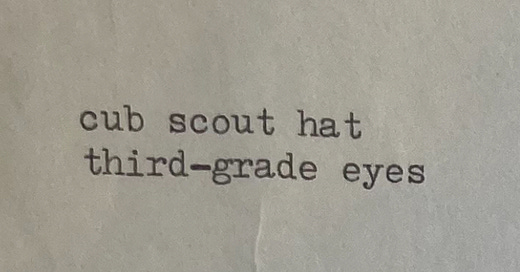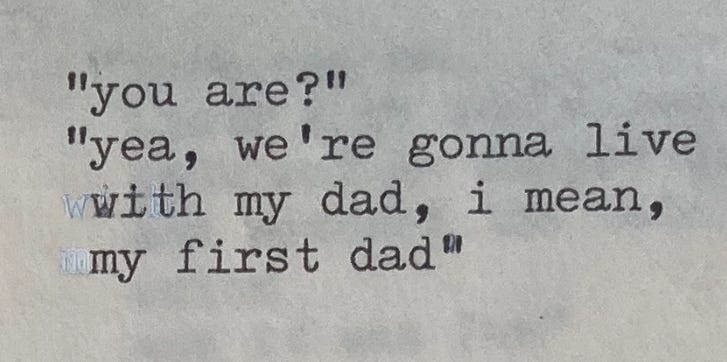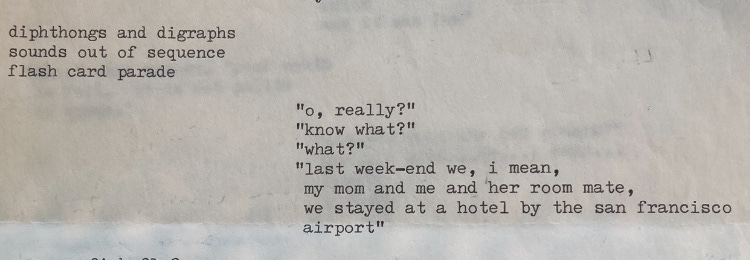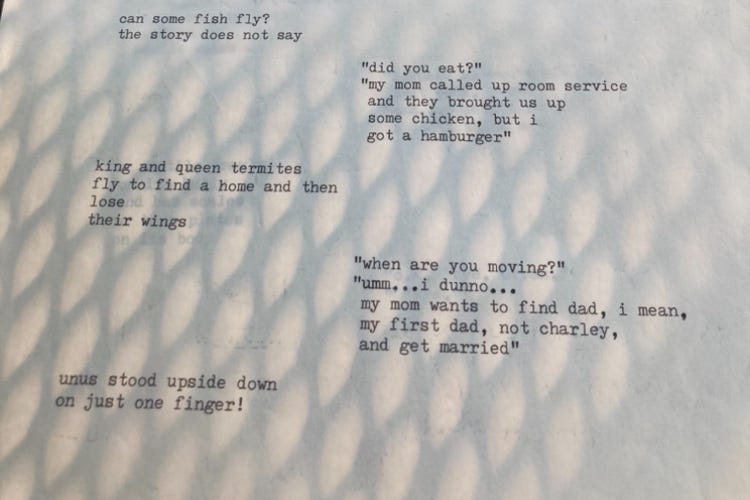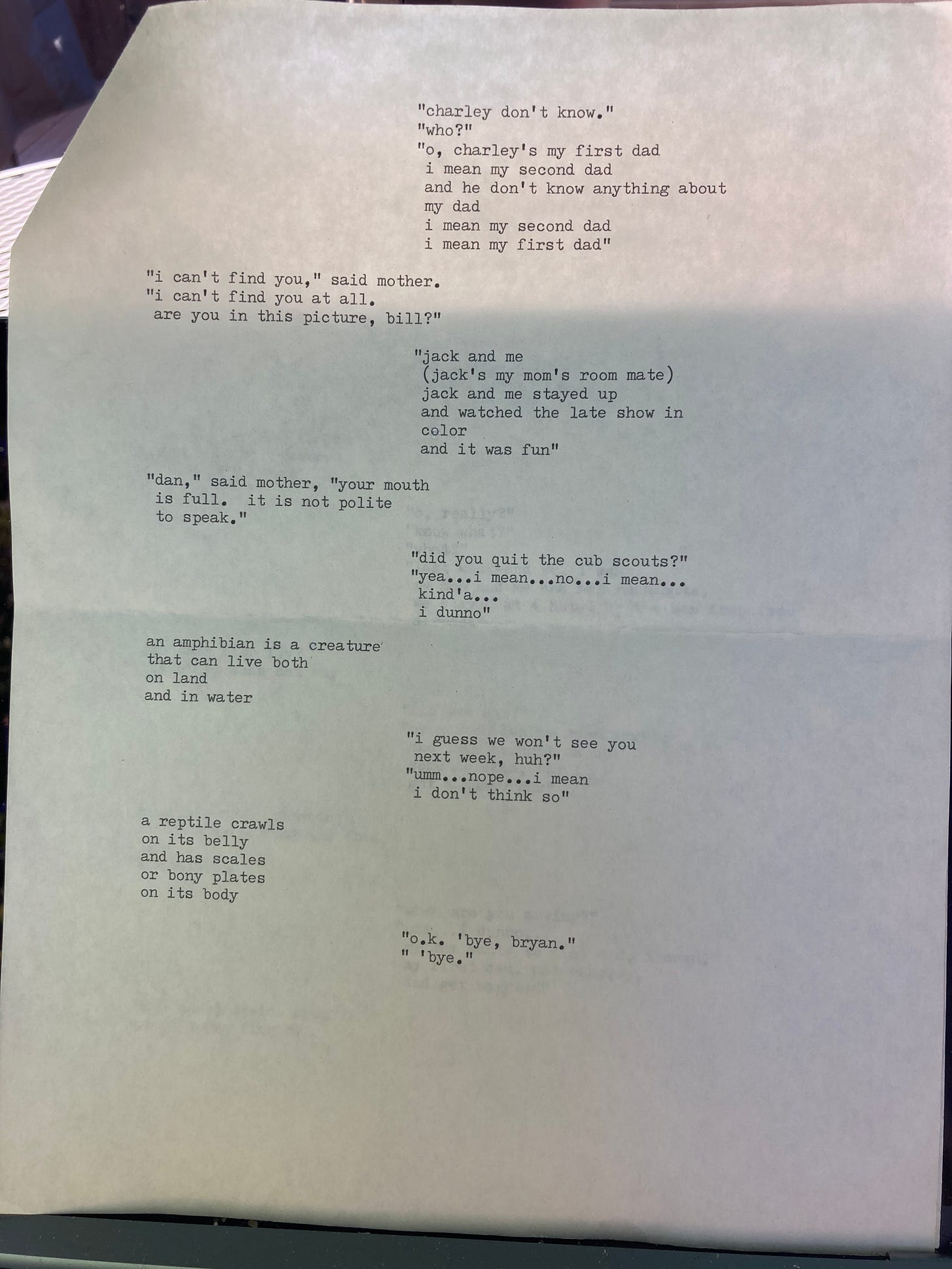Knowing a thing, doing something well, is always learned more deeply in the teaching. Writing to learn is fine; writing to teach, divine. When I wrote this poem decades ago, I wrote it to learn. I use it here 44 years later as I write to teach what I learned from Bryan.
*
Teaching young children to read became my accidental occupation in 1979. Emigrating from the Midwest to California, I had no job awaiting me, and I stumbled upon a private commercial reading clinic after two months at a Mobil station on Glendora Avenue in Pomona. I could see Mount Baldy.
Averaging 350 students any given month, this clinic ran at full steam between 3:30 pm and 8:00 pm when credentialed teachers supplemented their incomes by tutoring in a honeycomb of identical booths mostly first - fifth graders in individual sessions for reading or math four evenings per week, some on Saturdays. I tutored in this and similar clinical settings for almost three years.
*
The clinic relied on a thorough intake protocol, using a phonological inventory, standardized oral, silent reading, and vocabulary tests interpreted by the owner, a gifted reading teacher, especially with three-and four-year-olds, his major draw. Results were written up in a report and discussed with parents or guardians before enrolling a student for either half-hour or full-hour sessions twice per week.
At one point in my own clinic in Northern California, I tutored in the morning and early afternoons under a contract with the California Youth Authority.
*
One might suspect that a reading materials hoarder owned the original clinic, my first setting. SRA kits of every kind, power builders, rate builders, rfu’s, tachistoscopes, ShadowScopes, film projectors with audio cassettes and headphones (auding stations), word lists mimeoed from the Reading Teachers Book of Lists in filing cabinets, McCall-Crabbes readers, Timed Readings, Vocabulary Exercises Galore.
But the work horse for the bulk of tutors was Barnell-Loft Specific Skills, a graded 12-level series of seven or eight specific skills like working with sounds, getting the main idea, getting the facts, drawing conclusions, using the context, etc.—that and a patented strategy for improvising phonics lessons tailored to the student using a lesson lens everyone learned from observing the owner. I would use it today as if by instinct. I’m not exactly sure when the following excerpt was written, but as near as I can tell, there is a hot used market for BL books:
“For over 25 years, this program from Barnell Loft has been proven to successfully build comprehension skills. The Specific Skill Series increases the proficiency of all students in all skill areas, although it works especially well for remedial instruction. This updated classic, with reading selections and contemporary artwork, builds 9 essential skills: Working Within Words Using the Context Getting the Facts Drawing Conclusions Identifying Inferences Following Directions Locating the Answer Getting the Main Idea Detecting the Sequence Features: Each skill is developed through individual books tailored for each reading level Short reading passages capture students' interest Consistent format promotes rapid skill acquisition Can be used one-on-one, in small groups, or with your entire class.”
*
These snippets of typewritten text come from a poem I wrote in 1980 in my own private clinic. I’d taken on Bryan because his mother took him out of school to protect him from some angry man she feared. I was using Barnell-Loft with Bryan.
On his last lesson after he tells me he is moving to LA, my poem reads through whiteout ghosted letters…
*
Bryan and I start in earnest with Barnell-Loft “Working with Words.” Bryan was an accomplished reader, the main reason his mother opted for tutoring—something to keep him plugged in as she shielded him from abuse. So here goes the lesson.
We finish our word study and commence getting the main idea:
Needless to say, this experience with Bryan had me wishing I could stand upside down on one finger. It felt absurd to be talking about a figure in a circus in a kid’s life taking place in chaos. I realized his mother could have just not brought him anymore. I would have been left wondering whatever happened. I shook Bryan’s hand and patted him on the shoulder before he left and listened for the bell that rang when the door was opened.
I had an empty space in my schedule after Bryan left and sat back with some blank paper to make sense of it. My habit when I’m trying to figure out what just happened is to write down the concrete. I think of it as the concrete. I try to find something clear and hard to work on. Helps me remember.
I got the dialogue cold, I know. My ears were tape recorders. I really had fun with the lesson part of it, poetry is joy for sure, the left column. Several of the stanzas are verbatim words handpicked (cherry picked?) laboriously from Barnell-Loft. I hope I don’t get accused of plagiarism.
Though I used images of the words in the same syntax, I did ponder the line breaks. BL’s words remain in their books. My words look, sound, and sit in language identical to BL. But they mean nothing like what they mean in BL where they mean nothing in particular. Dan’s impolite chewing is annoying and morphs into an amphibious creature that can live on land or in water and finally reptilianly crawls on its belly.
Here is the rest of the poem:
